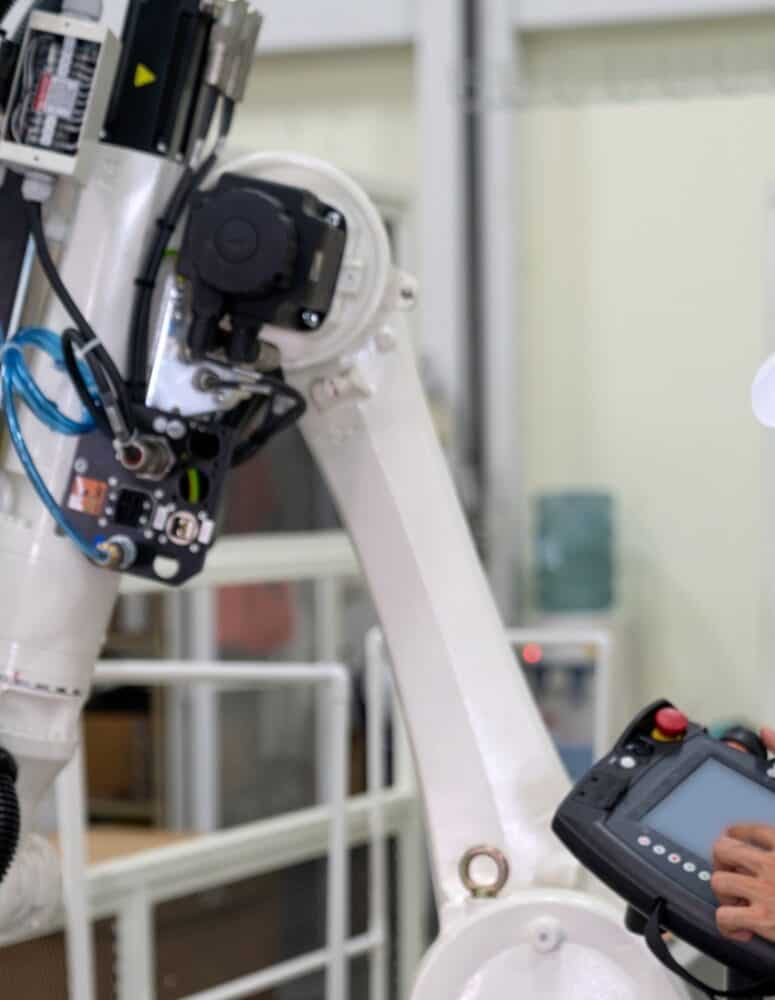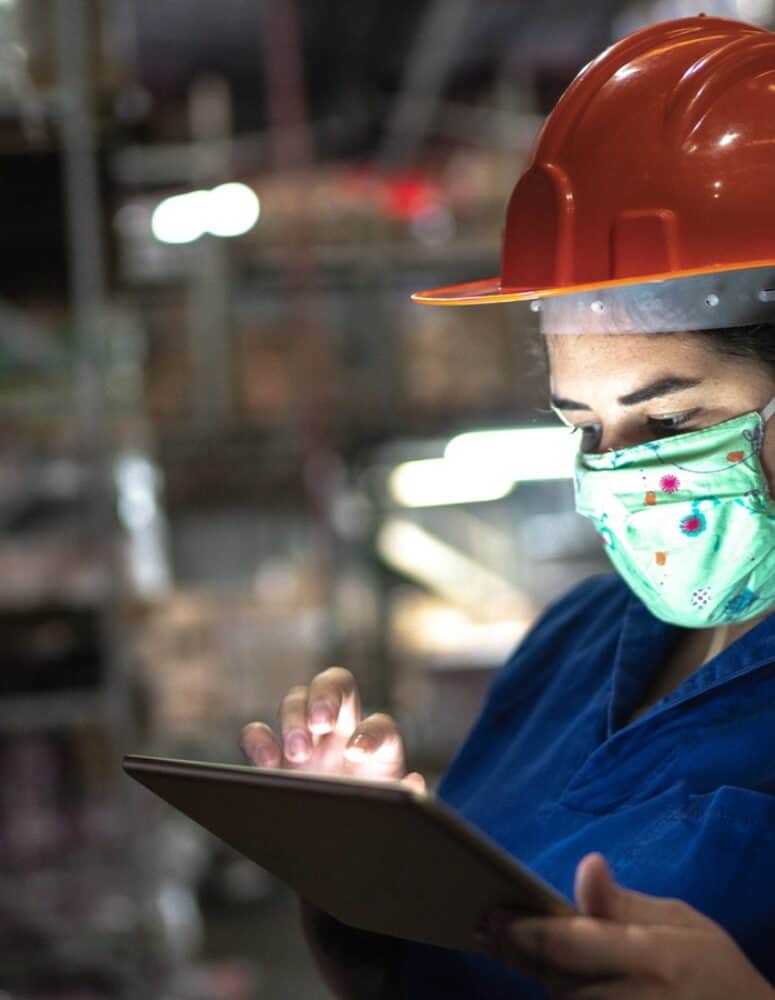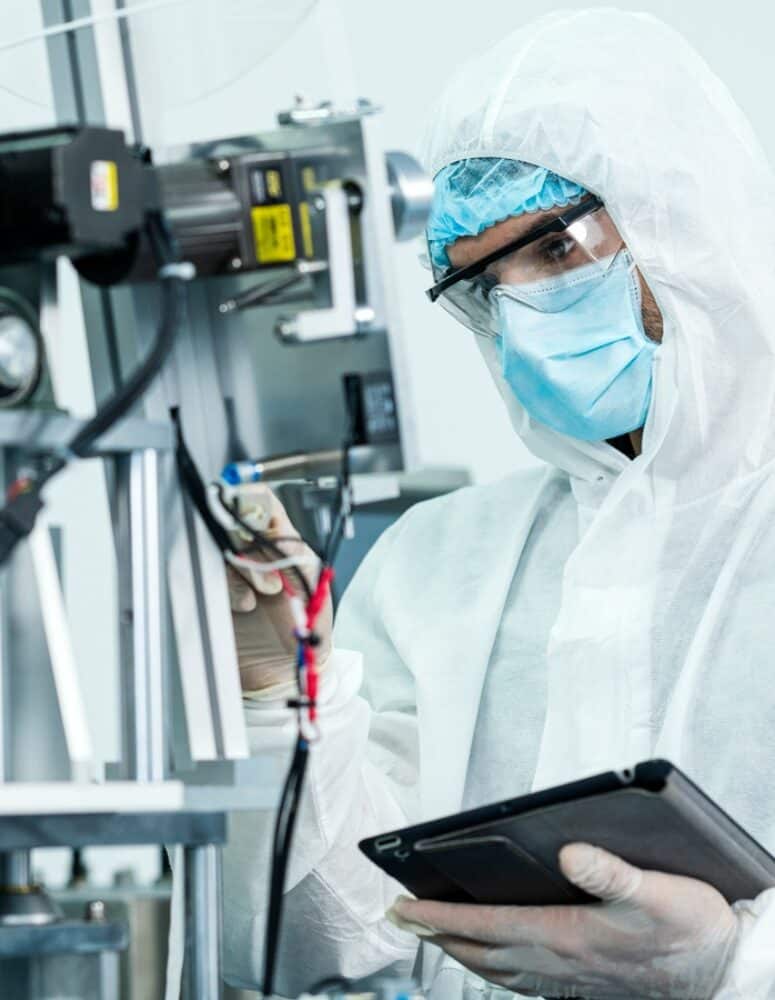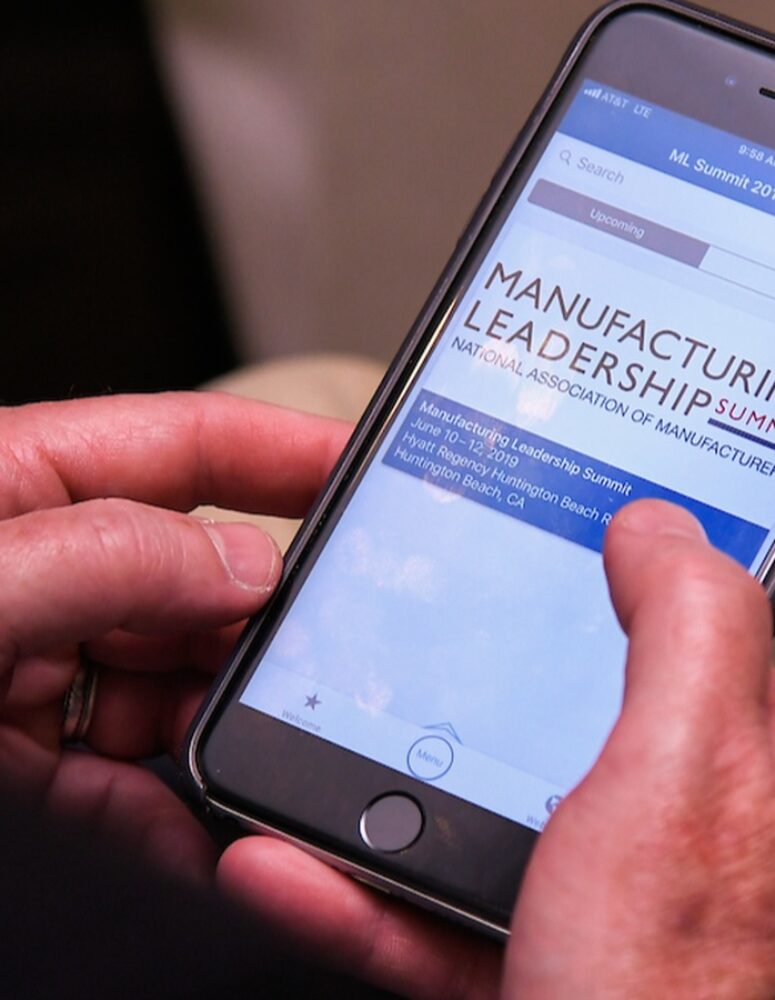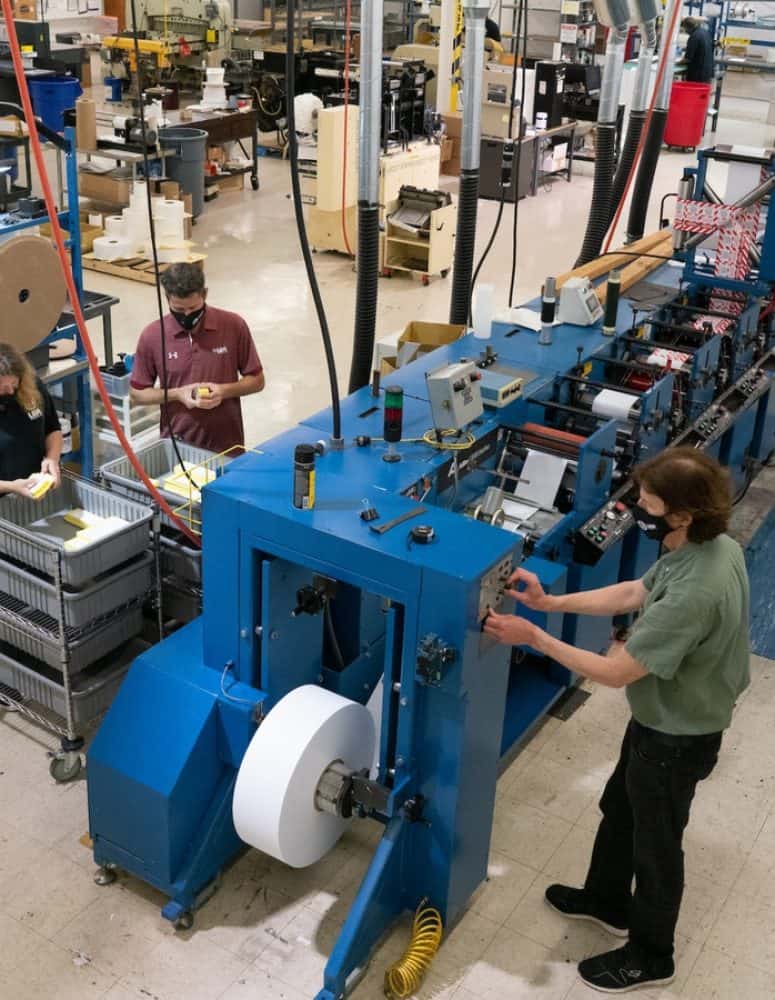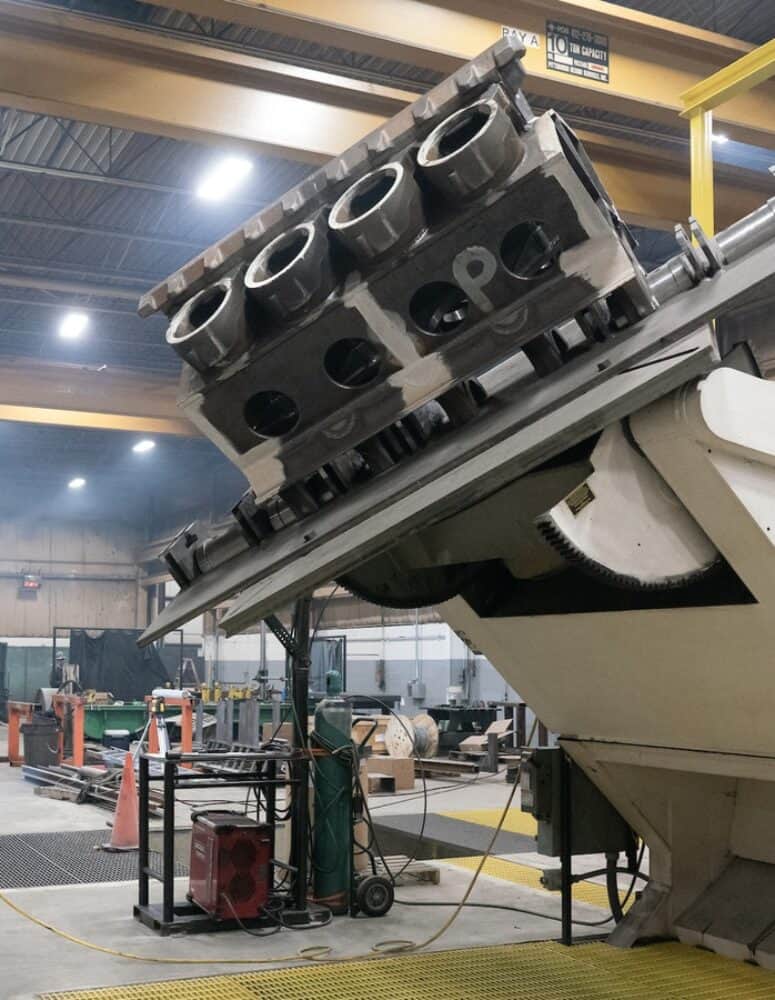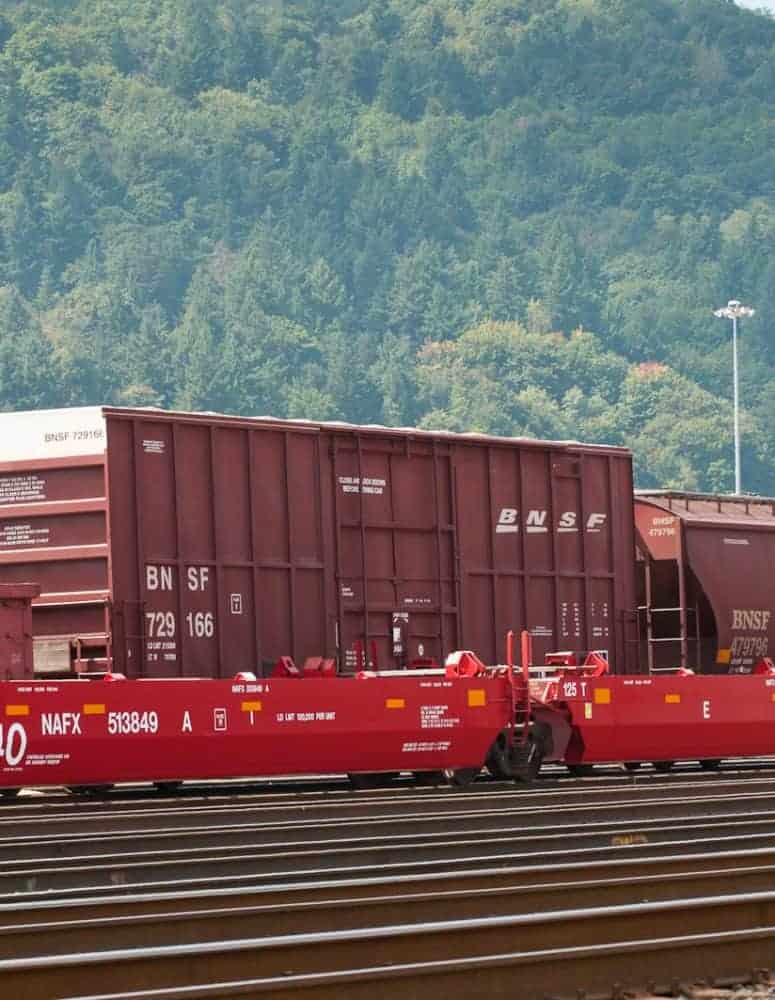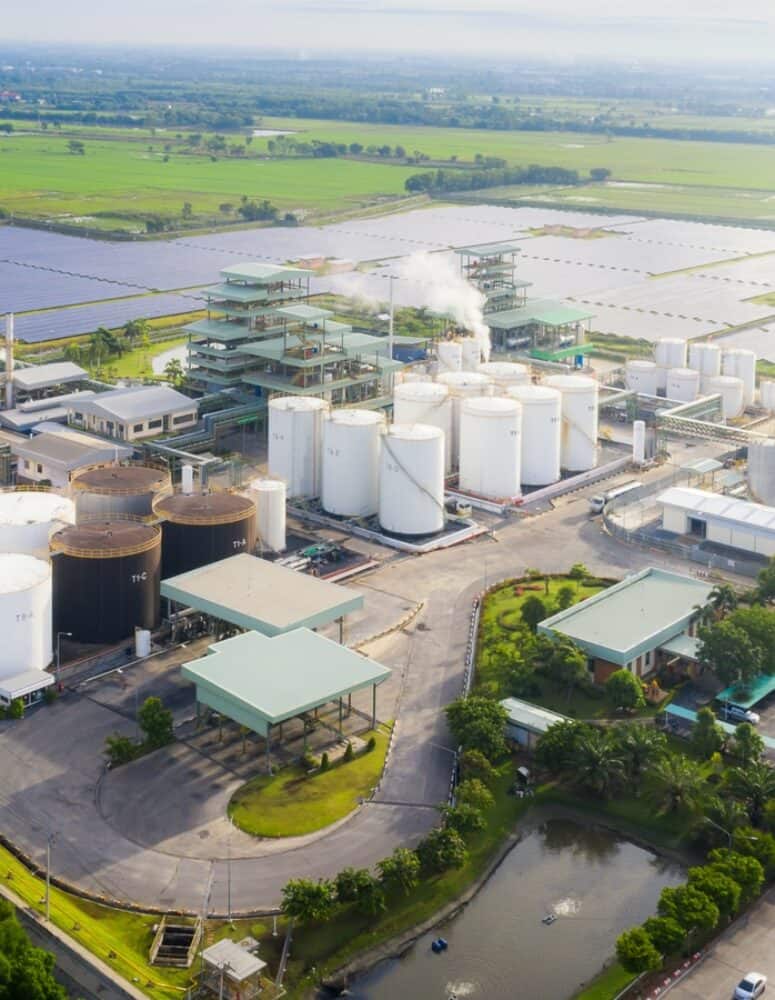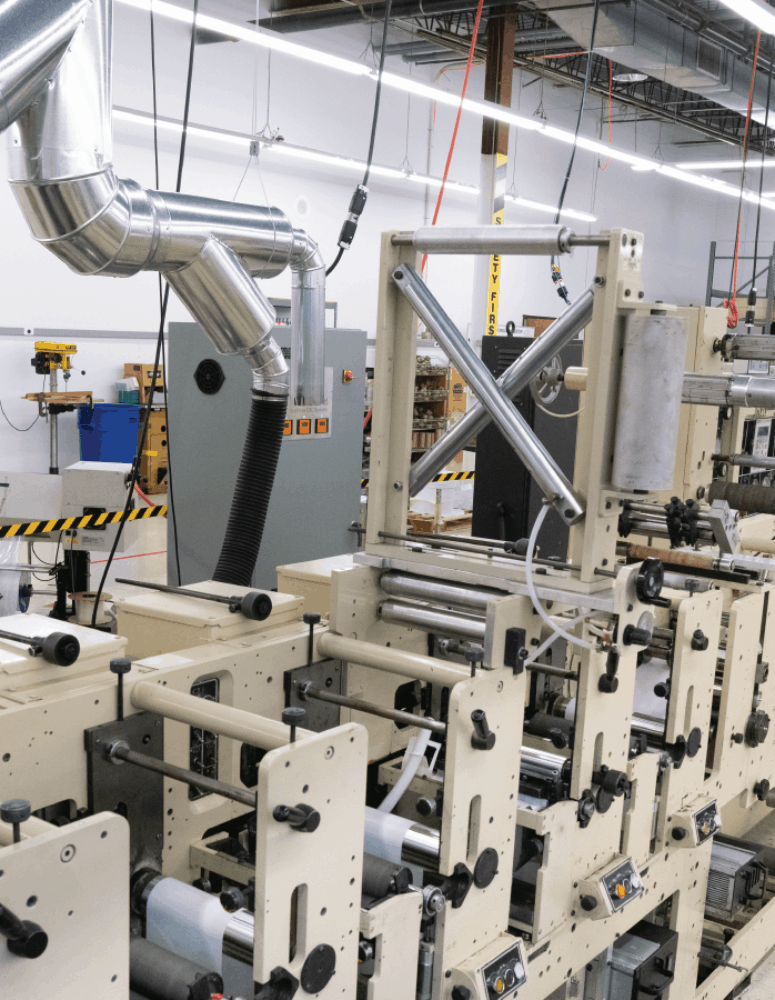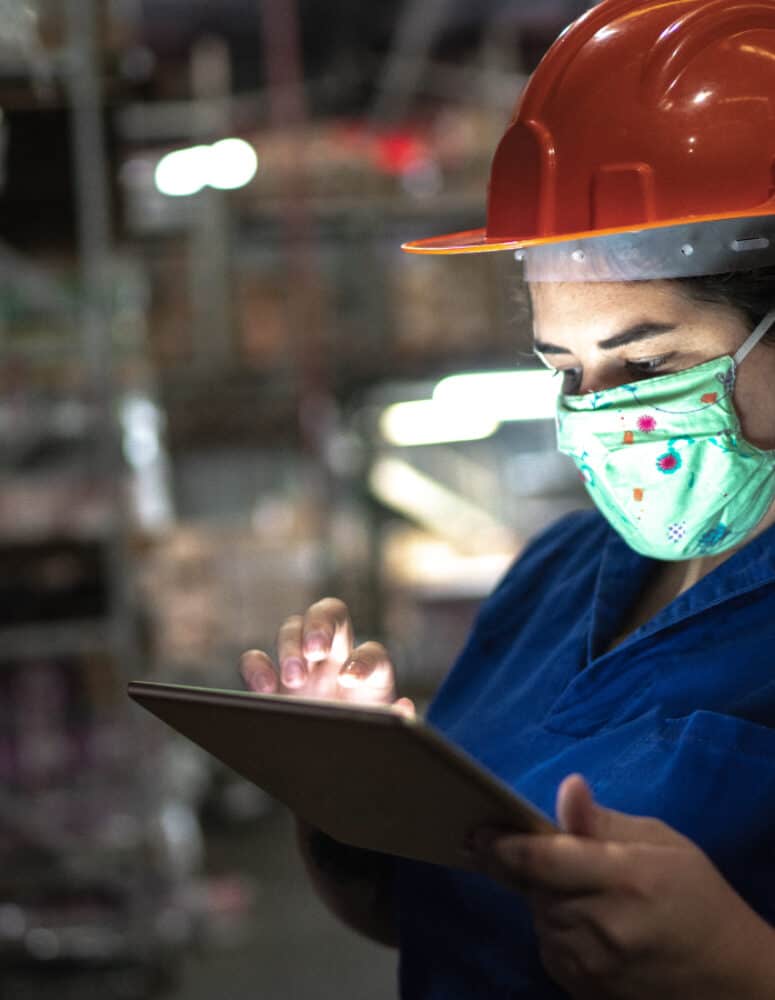Manufacturing Leadership Council Recognizes Pfizer CEO
Get the Latest News
Get involved
The Manufacturing Leadership Council—a division of the NAM that helps manufacturers leverage digital transformation—named Pfizer CEO Dr. Albert Bourla the 2022 Manufacturing Leader of the Year at the 18th annual Manufacturing Leadership Awards Gala.
The details: The ML Awards are the U.S. manufacturing industry’s biggest stage for recognizing excellence in digital manufacturing. Since the program’s founding in 2005, more than 1,000 high-performing projects and individual leaders have been honored with an award. Winners represent companies of varying sizes in a wide array of industries.
The big award: The Manufacturing Leader of the Year award was presented to Bourla for Pfizer’s extraordinary and ongoing contributions in fighting the COVID-19 pandemic.
- “Manufacturing in America today is stronger thanks to the leadership of Dr. Bourla and his team at Pfizer, including our Executive Committee member Mike McDermott,” said NAM President and CEO Jay Timmons. “Albert and Mike’s passion and dedication to defeating COVID-19 set an example for thousands of companies as our industry navigated and responded to the evolving pandemic, and their leadership and innovation will make us better prepared to respond to the next crisis.”
Other honorees: Awards were given to companies that excelled in various categories of manufacturing, including Protolabs for collaborative ecosystems, AB InBev for digital network connectivity and operational excellence, Dow for digital supply chains, General Motors for engineering and production technology, Flex and Johnson & Johnson for enterprise integration technology, AUO Corporation for sustainability and ALOM Technologies for transformative cultures.
Manufacturers of the Year: Protolabs was named the Small/Medium Enterprise Manufacturer of the Year, and AB InBev was named the Large Enterprise Manufacturer of the Year.
The last word: “Manufacturers continue to be the driving force for global economic recovery and pandemic response as they establish innovative ways to problem-solve in an increasingly complex environment,” said MLC Co-Founder, Vice President and Executive Director David R. Brousell. “Those recognized tonight have helped establish a roadmap for the future of the sector and highlight the importance of Manufacturing 4.0.”
Ransomware Attacks Increasingly Targeting Manufacturers
Get the Latest News
Get involved
Think your business is safe from hackers? You could be wrong, according to the Manufacturing Leadership Council—the division of the NAM focused on digital transformation in manufacturing.
With the incidence of ransomware attacks against manufacturers on the rise, all businesses should be on guard against cyber extortion, advises Peter Vescuso, vice president of marketing at industrial cybersecurity provider Dragos and a member of the Manufacturing Leadership Council.
How it works: Ransomware schemes often target manufacturers by disabling their operations technology and blackmailing victims into paying to restore the functionality of their systems. Manufacturers that cannot afford to have production halted by hacks often have no choice but to pay the hackers’ ransom.
What we’re seeing: Industrial ransomware attacks increased significantly in 2021, with criminal groups specifically identifying manufacturers as vulnerable and profitable targets.
- Last year, manufacturing accounted for 65% of industrial ransomware incidents, according to Dragos.
- The top three manufacturing subsectors targeted by ransomware attacks were metal components (17%), automotive (8%) and plastics/technology (6%).
- Manufacturers as a group were targeted six times as often as the second leading industrial sector, food and beverage.
Why it matters: Many manufacturers remain unprepared for ransomware attacks.
- About 90% of manufacturers have limited visibility into their OT systems, according to Dragos.
- 90% of manufacturers are also ill prepared with poor network perimeters, 80% have external connectivity exposure in their OT systems and 60% use shared credentials that make it easier for ransomware groups to infiltrate systems.
Who’s behind it: In 2021, ransomware groups Conti and Lockbit 2.0 caused 51% of all ransomware attacks, and 70% of their attacks targeted manufacturers.
- These groups successfully developed malicious business models and used underground marketplaces to outsource operations to partners who then carried out the attacks.
- Ransomware groups also fund research and development to stay ahead of the curve on security and infiltrate systems.
What’s next: “Ransomware trends are likely to continue shifting as groups reform and reprioritize and as law enforcement pursues them and takes them offline,” says Vescuso.
- “As this evolution continues to evolve, Dragos analysts believe with a high degree of certainty that ransomware will continue to disrupt all industrial operations and OT environments through 2022, in manufacturing and beyond.”
Protect yourself: To protect against ransomware attacks, manufacturers must take the necessary steps to modernize and secure their IT and OT systems. Check out NAM Cyber Cover for information and risk management solutions.
Meet the Manufacturing Leadership Council
Get the Latest News
Get involved
How is digitization changing manufacturing? What can manufacturers do to stay competitive in a fast-shifting world? What does the future look like—and how can leaders prepare for success?
Those are the kinds of questions being asked and answered by the NAM’s Manufacturing Leadership Council—a member-driven global business leadership network focused on the intersection of manufacturing and technology. We spoke with David R. Brousell, MLC co-founder, vice president and executive director, who gave us more insight into what the MLC is, how it works and why it matters today more than ever.
An early start: The idea for the MLC was born nearly two decades ago, when manufacturers began turning to consumer technologies to strengthen their businesses.
- The convergence of these technologies with traditional operational technologies on factory floors sparked an idea. Brousell, who was running a publication called “Managing Automation,” recognized the trend—which he called “Progressive Manufacturing”—and founded an annual conference for manufacturers to discuss new approaches and best practices for the future.
- By 2008, that conference had given rise to a council designed to offer useful programming for manufacturers on the future of digitization. Ten years later, the council became a part of the NAM.
- “We realized that digitization was not a tactical or small change—it was a fundamental change in the industry,” said Brousell. “It was clear that manufacturers needed an informational resource or organization to bring them together to deal with what we now call Manufacturing 4.0 in a systematic way.”
A systematic approach: Today, the MLC represents what Brousell calls “the digital transformation arm of the NAM,” helping manufacturers meet future needs and address ongoing trends—through changes in technology, organization and leadership.
- “The transition to the digital model of manufacturing is only one part technical,” said Brousell. “The harder part is changing the organizational structure to be more collaborative and decentralized and making the leadership approach digital-first. We’re probably the only organization that has looked at it this way, in a systematic way, beyond technology alone.”
A critical focus: Every year, the MLC lays out a member-approved set of critical issues involved in the transition to Manufacturing 4.0 and offers resources and programming from thought leadership to plant tours to the Rethink Summit.
- This year’s critical issues include topics like factories of the future; transformative technologies, including AI and machine learning; augmented reality and virtual reality; Manufacturing 4.0 cultures; and cybersecurity.
A broad view: Digitization isn’t just an issue for individual manufacturers. Because manufacturing is so vital to economic and societal growth, it’s also important to the future of the United States and the world.
- “Manufacturing is one of the fundamental drivers of social and economic prosperity,” said Brousell. “Its growth will lead to a better life for people. No other industry can say that. And I believe that the countries whose companies are most successful in making the transition to the digital model are going to be the powers of this century. There’s a lot riding on this.”
Sign up: Come learn from leading manufacturers at the Rethink Summit, June 27–29, in Marco Island, Florida. It’s the premier event for senior operational executives and their teams as they continue to navigate disruption.
Manufacturing Supply Disruptions Could Last into 2023
Get the Latest News
Get Involved
Supply chain disruption could continue for more than another year, according to the newest Resilient M4.0 Supply Chain survey conducted by the NAM’s Manufacturing Leadership Council. The MLC is the digital transformation arm of the NAM.
What’s the holdup? A combination of factors is causing fundamental shifts in supply chain approaches across the industry. These include pandemic lockdowns, blocked shipping lanes, container scarcity, material and component shortages, extreme weather events, rising prices and military conflict.
What manufacturers are doing about it: Supply chain organizations are reassessing traditional supply chain strategies, reducing network complexity and integrating key functions.
- They are also redesigning processes and harnessing the power of digital tools to transform their supply chain ecosystems.
Universal disruption: Even supply chain structures with some local or regional networks have been affected by recent events, according to the MLC’s survey.
- Ninety percent of respondents reported suffering either significant (52.5%) or partial (39%) disruption in the past two years. Just 0.5% said they had seen no disruption.
Improving resilience: While many manufacturers have taken action to reduce supply vulnerabilities, 73% of companies said their current supply chains are not fully protected, and 12% said they believe their supply chains lack resilience.
Integrated supply chains: While today just 19% of companies said their supply chain structures are fully integrated, this proportion is set to more than double (to 47%) within the next two years.
- The number of companies that remain dependent on siloed operations is set to fall from 14% to 4% over the same period.
Digital opportunities: The race to fully digitize more supply chain operations is picking up speed.
- In nearly every supply chain function, companies said they are planning significant increases in digital adoption in the next two years to streamline their supply chain organizations.
Obstacles to progress: Many obstacles to future supply chain development involve issues with industry partners. Among the challenges cited by manufacturers in the survey were the following:
- Differences in digital maturity among partners (54%)
- A lack of common data platforms (53%)
- Problems transforming traditional supply chain processes (29%)
- Upgrading legacy equipment (26%)
- A lack of skilled employees (22%)
Review the data: Click here to review the data in detail and read manufacturer responses to survey questions.
Plant Tour Provides Firsthand Look at Digital Transformation
Get the Latest News
Get involved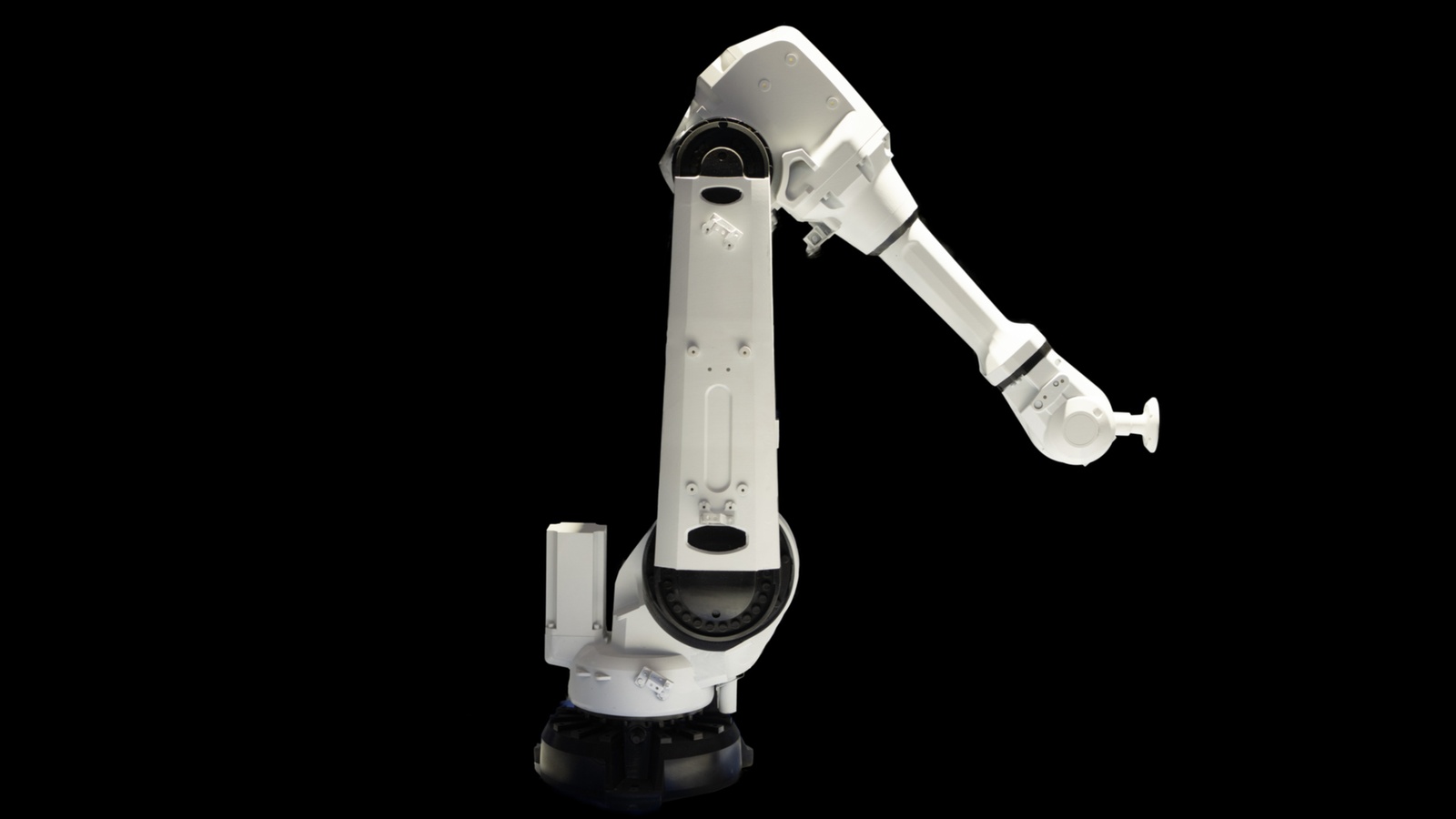
On a recent tour of Intertape Polymer Group’s Tremonton, Utah, plant, manufacturers saw disruptive technology in action. From employing 3D printing to slashing parts-making time to programming floor equipment to identify and fix problems quickly, the Manufacturing 4.0 processes and technologies were on full display. The NAM’s Manufacturing Leadership Council hosted the tour and brought 70 MLC members to the paper- and film-based packaging maker.
Growth: IPG, a Montreal-based manufacturer whose products include the cling film StretchFlex, has seen its revenue double in the past six years, from $750 million to $1.5 billion.
- The company now has approximately 4,000 employees across 34 locations, including 22 manufacturing facilities in North America.
What they saw: In addition to 3D printing and problem-solving floor equipment, tour participants got to see how IPG:
- Manages parts more effectively with an automated storage system; and
- Uses “hackathons” and employs a data-driven, digital-first mindset to find solutions to challenges.
Digital journey: In a briefing before the tour, IPG Vice President of Business Transformation Jai Sundararaman described why and how IPG undertook its digital transformation journey.
- First, the manufacturer conducted an in-depth investigation. This included studying 20 different technologies, attending more than 10 industry conferences, hosting technology summits with vendors and engaging in more than 25 networking sessions with fellow members of the MLC.
Phased transformation: IPG’s phased approach to digital transformation focused on delivering business value. The company undertook the following schedule:
- Phase 1: Align strategy and execution and “homogenize” operating culture. Upskill and retain talent with digital and process knowledge.
- Phase 2: Drive revenue and margin growth by applying digital technologies at scale in other functions, such as customer engagement.
- Phase 3: Leverage digital technologies for business model innovation.
M4.0 discussion: At the end of the IPG plant event, participants joined a panel discussion on data standards and analysis. Panelists discussed how to measure the return manufacturers get from implementing M4.0 technologies and how to get buy-in from employees and leadership.
Upcoming plant tour: Join the MLC’s next plant tour right from your desk on July 27. Participants will take a virtual look inside Accuray’s Global Manufacturing Center in Madison, Wisconsin. This virtual plant tour will highlight the challenges of a low-volume, high-complexity manufacturing and supply chain model. Register today to reserve your place.
Finding Solutions for a Sustainable Manufacturing Future
Get the Latest News
Sign up now
With increased pressure from customers, regulators and even shareholders, sustainable business practices are no longer optional for manufacturers. From reduced energy and materials consumption to lower emissions and ethical sourcing, manufacturers are expected to meet ambitious new goals. Luckily, the Manufacturing Leadership Council has established a new member working group devoted to helping manufacturers reach these objectives.
Support set-up: With five virtual meetings each year, the M4.0 Sustainability and Net Zero Decision Compass Group will explore key issues, best practices and challenges related to creating sustainable, compliant and environmentally friendly operating strategies.
- At the first meeting, “Next Steps in Manufacturing 4.0 Sustainability,” on March 10, attendees heard from 3M Senior Vice President of Environmental Strategies and Fluorochemical Stewardship Dr. Rebecca Teeters and Lexmark International Chief Sustainability Officer John Gagel. Both speakers are also MLC board members.
Why the new group: The MLC decided to create the group after a survey of their more than 3,300 members revealed sustainability was a top member business concern.
- “We decided that given the intensity of interest in sustainability and related subjects, such as net-zero and the circular economy, this was an opportunity to dedicate a whole new group to the topic,” said MLC Co-Founder, Executive Director and Vice President David Brousell.
Good for business, too: While manufacturers have been discussing and working toward sustainability for decades, recent growing concerns about climate change and other environmental issues are making the matter increasingly urgent.
- Manufacturers that take on sustainable business practices are seeing competitive advantages ranging from cost savings to higher product quality to increased shareholder and employee satisfaction.
Lessons from manufacturing peers: The new Decision Compass group will share sustainability strategies, the real-world achievements of manufacturing companies, knowledge about the use and application of advanced technologies and timelines for implementation.
- Participants will also be able to see how they stack up against other manufacturing companies.
Get involved: The MLC offers resources to help manufacturers improve their operations and learn about digital manufacturing. To learn more about the sustainability group or find out about MLC membership, email [email protected].
Case Studies for Success in the Factory
Get the Latest News
Get involved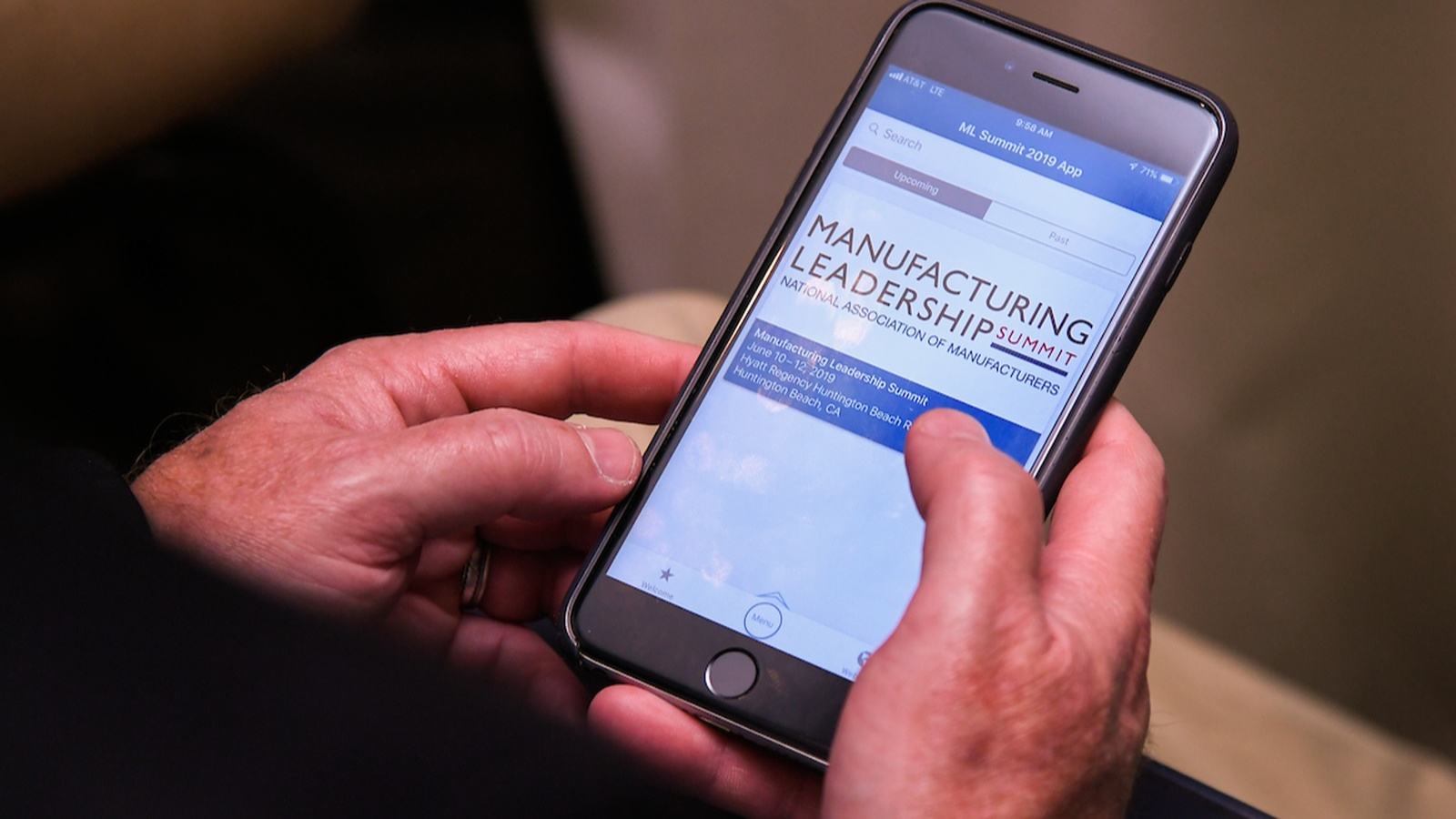
There’s nothing quite like a real-world test run to determine whether a new technology is right for your business. That’s where Rethink, the annual summit of the NAM’s Manufacturing Leadership Council, comes in.
The world’s leading event on Manufacturing 4.0, Rethink boasts an agenda packed with case studies to help manufacturing leaders see exactly how various digital technologies might help them improve their operational quality and efficiency.
The featured case studies coming to Rethink include the following:
- The Expanding Reach of Collaborative Robots: Examine practical applications for collaborative robots in manufacturing. Discover the benefits already being realized from the use of robots and identify ways to maximize the benefits.
- Extracting Insights from Plant Floor Data: See firsthand how to use data to monitor equipment performance, predict conditions and take preemptive action to avoid downtime. Gain practical takeaways on how to leverage data for bottom-line benefits.
- How AR/VR Can Empower Frontline Workers: Take a deep dive into one company’s advanced deployment of augmented and virtual reality technologies. Explore how these technologies helped transform operational activities and empower frontline workers.
- Fostering Data Literacy: The What, Why and How: Learn how to manage and analyze data from all aspects of your operations and use it effectively to improve decision making. Gain an understanding of the emerging discipline of data literacy as a way to overcome business culture hurdles.
How to participate: The Rethink summit takes place June 27–29 in Marco Island, Florida.
- In addition to case studies, the agenda will include inspirational keynote speeches, thought-provoking panel discussions and hands-on think tanks.
- More than 300 top-level executives and their teams attend each year.
- Participants include professionals in operations, IT, supply chain, engineering, C-level management, HR and more.
Click here to browse the agenda and to register.
Outlook Hazy for Manufacturing 4.0 Progress, Survey Shows
Get the Latest News
Sign up here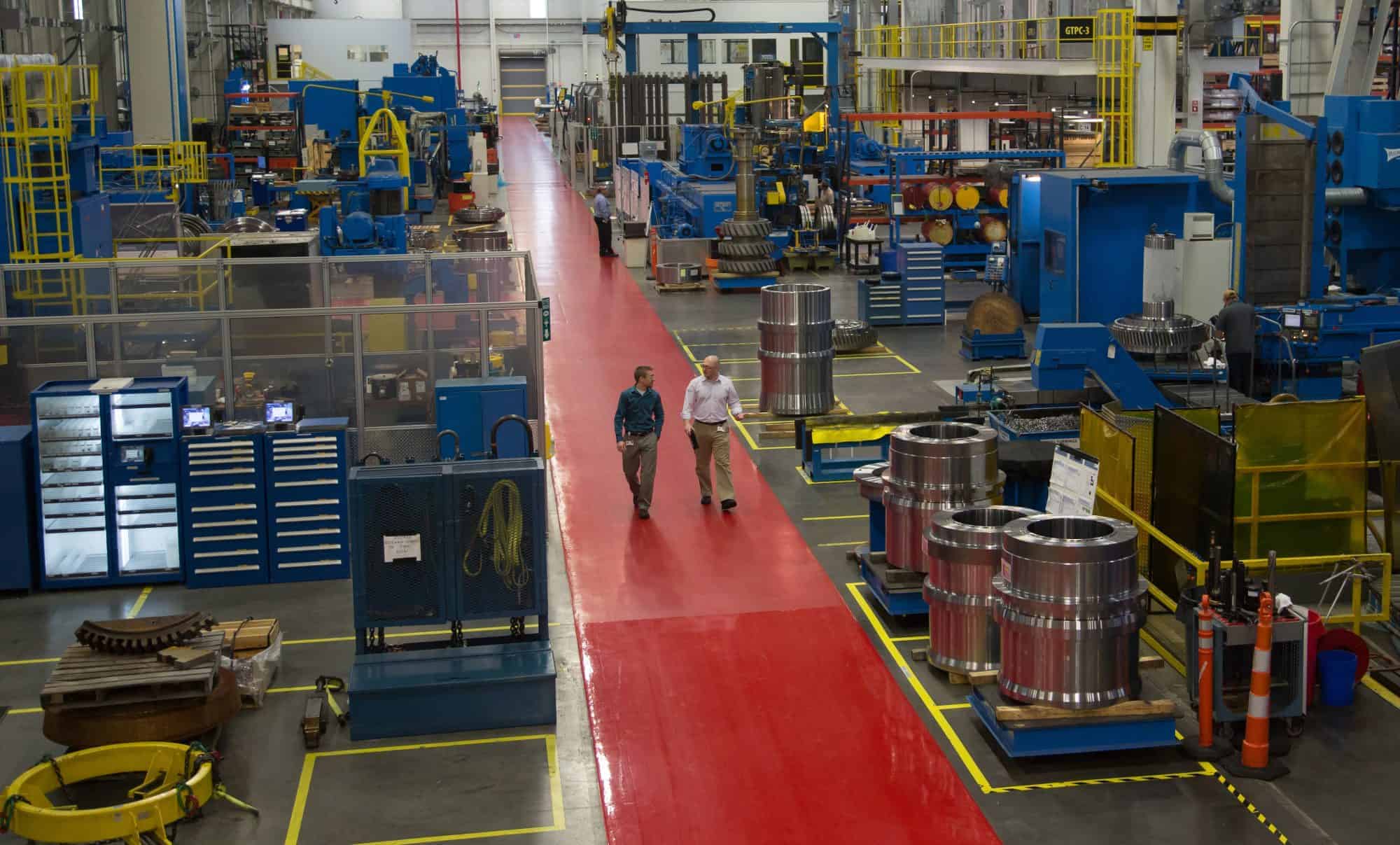
During the COVID-19 pandemic, many manufacturers raced to adopt advanced manufacturing technologies as a way to mitigate related disruptions. But there are signs the implementation is falling short of expectations, according to a new survey from the Manufacturing Leadership Council.
Is M4.0 adoption increasing? Respondents to the most recent survey were nearly evenly divided as to whether they were increasing digital-tool adoption in the wake of the pandemic: 30% said adoption had accelerated, 32% said it decelerated and 35% said it had not changed. Prior surveys overwhelmingly revealed that manufacturers were accelerating their digital investments.
Key findings: Other data points of note include the following:
- Most manufacturers gave themselves a low- to mid-level grade on their M4.0 maturity—somewhere between a 3 and a 7 on a scale of 1 to 10. When it comes to M4.0 roadmaps, the largest percentage of respondents (33%) said that formal roadmaps were still under development.
- Nonetheless, progress is being made in some areas. Customer support made the most strides in M4.0 adoption, with 12% of respondents rating themselves as advanced in this area compared to only 4% last year. Additionally, 20% of manufacturers surveyed said their plant floors are extensively networked and IP enabled, and 52% said they have digitization for production and assembly processes.
- More manufacturers are keen to take advantage of M4.0 technologies: 43% of respondents said they use machine learning, and another 27% said they plan to bring it online in the next two years.
- The biggest jump for planned usage is for digital twins: 32% of respondents said they plan to implement this technology in the next two years, on top of the 25% who are using it now.
Major risk: Many manufacturers find themselves in a perilous cybersecurity position, according to the survey. Just 19% have a fully formed cybersecurity program that includes workforce preparedness plans, employee training and routine drills that simulate a cyberattack.
- This is likely why 57% of respondents say that their company’s plant floor systems and assets are only partially secure against cyberattacks. The need to upgrade legacy equipment tops the list of potential challenges, with 59% of manufacturers reporting that they should do so.
Other struggles: Not surprisingly, 53% of respondents cited a lack of skilled employees as their top challenge. Some 39% said access to an adequate budget for M4.0 investments was their chief problem.
The takeaway: Despite these issues, manufacturers still see tremendous potential in embracing M4.0, according to the survey’s findings.
- Sixty-seven percent of respondents cited better operational efficiency as a top benefit of M4.0; 49% cited better decision-making, 47% cited greater speed and flexibility and 42% cited cost reduction.
- Disruptions of the past two years have made manufacturers want to move toward becoming factories of the future, but the realities of the ambitious undertaking are proving daunting. Those who persist, however, are likely to find great rewards.
How a 5G Smart Factory Doubled Ericsson’s Output
Get involved
Get involved
How will the 5G transition affect manufacturing? If you ask Ericsson Senior Vice President Åsa Tamsons, enormously.
5G will help drive global transformation, innovation and sustainability in our sector, Tamsons recently told the NAM’s Manufacturing Leadership Council. She sat down with MLC Co-Founding Executive Editor and Senior Content Director Paul Tate at Ericsson’s new 5G Smart Factory in Lewisville, Texas, to tell us more.
About Ericsson: Founded in 1876, Ericsson Inc. is a leading provider of information and communication technology. The company is now a $25 billion global enterprise with 100,000 employees serving clients in 180 countries.
About the Lewisville plant: Ericsson describes its Lewisville plant, which opened in March 2020, as a “5G-enabled, digital native” facility.
- “We wanted to be able to obtain data from every single source, device, machine and person operating in the facility, both now and in the future,” she said. “One part was implementing 5G, but we also needed a data architecture to secure that and to use equipment that is able to extract both production data and operational status.”
Development process: In its journey to Manufacturing 4.0, Ericsson used a particularly agile development process.
- “We had a mission to develop 25 use cases within a year,” Tamsons said. “In the first eight months, we launched seven of those 25 use cases. In the remaining four to five months, we launched the other 18. It just shows the power of doing that groundwork, while also demonstrating that you can launch end-to-end solutions in rapid time. Then you really start to have platforms that you can scale.”
Measuring impact: The Lewisville facility serves one of Ericsson’s biggest and most important markets in the world—yet it is operated by just 100 people.
- The plant delivers 2.2 times more output than similar sites that don’t have the same degree of automation or technology in place.
Lighthouse status: Lewisville is also one of the world’s first manufacturing plants to achieve Global Lighthouse Network status under the World Economic Forum’s new sustainability category.
- A combination of recyclable and reused materials, renewable energy, an ideal location close to a major airport and advanced manufacturing technologies supported this award.
- “Innovation is not all about technology,” Tamsons said. “It’s about how you apply it and how you can use the best of technology to create better solutions that are also more sustainable.”
What’s next: The Lewisville plant has plans for further innovation.
- “We’ll continue to build out the data structure and cloud capability, really focusing on how we can scale up the value of existing use cases and applications and on what the next use cases will be,” she said. “We’re continuing to invest in upgrading our manufacturing sites to develop a reliable, sustainable, global supply chain, not only in Lewisville, but across the world.”
Attend a plant tour: Join the MLC in Texas for the Ericsson Lewisville Plant Tour on Oct. 4–5 to see Ericsson’s 5G-enabled digital native, double Lighthouse award-winning plant for yourself. Save the date and watch for more details.
Meet the 2022 Winners of the Manufacturing Leadership Awards
Get the Latest News
Sign up here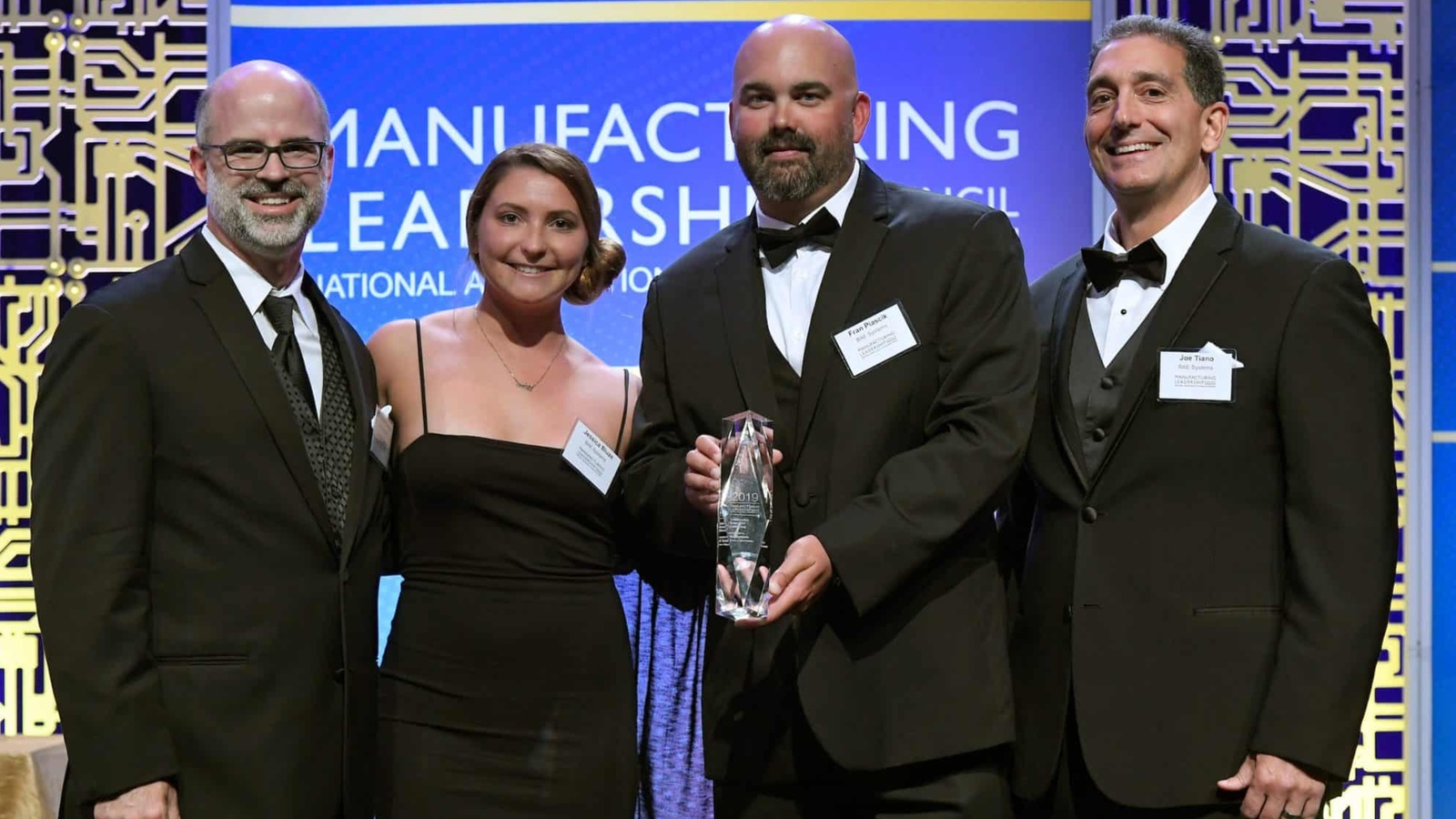
A group of world-class manufacturers and their leaders have been recognized for their achievements by the 2022 Manufacturing Leadership Awards.
About the awards: Presented by the Manufacturing Leadership Council, a division of the NAM, the awards recognize excellence in digital manufacturing. Since the program’s founding in 2005, more than 1,000 high-performing projects and individual leaders have been honored with an award. Winners represent companies of varying sizes in a wide array of industries.
This year’s awards were given in nine project categories and two individual categories. Some project categories include AI and Machine Learning, Digital Supply Chains and Digital Network Connectivity. Judging is done by a panel of industry experts, many of whom are past winners themselves.
Why it matters: The movement toward smart factories allows manufacturers to leverage data to become more efficient, productive, sustainable and competitive. In the difficult business conditions that many are experiencing, data-driven operations can mitigate disruptions and even predict them before they happen.
“This year’s winners are exemplary for their compelling use of technology, innovative approach to problem solving and overall commitment to furthering the progress of Manufacturing 4.0,” said Manufacturing Leadership Council Co-Founder, Vice President and Executive Director David R. Brousell.
Gala coming in June: Winners will be honored at the Manufacturing Leadership Awards Gala on Wednesday, June 29, 2022, at the JW Marriott Marco Island Beach Resort in Florida. The gala will also feature the announcement of this year’s Large Enterprise Manufacturer of the Year, Small/Medium Enterprise Manufacturer of the Year and Manufacturing Leader of the Year.
Select winners will present their projects at Rethink: The Manufacturing Leadership Council Summit, the industry’s premier event focused on Manufacturing 4.0.
See the complete list of winners here.

